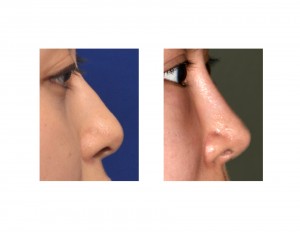
In the August 2018 issue of the Annals of Plastic Surgery, an article was published entitled ‘Availability and Safety of Osteotomy in Esthetic Rhinoplasty of East Asian Patients’. The authors reviewed over 200 hundred patients who received a combination silicone implant dorsal augmentation with nasal osteotomies. (percutaneous lateral and paramedian oblique osteotomies) A cadaveric study was also done comparing paramedian oblique and percutaneous lateral osteotomy vs. medial oblique and intranasal continuous lateral osteotomy techniques.
Their Asian Rhinoplasty clinical results showed a high patient satisfaction rate (91%) with a low complication rate. There was not a significant incidence of infecion. In the cadaveric study, greater stability was achieved when paramedian oblique and percutaneous lateral osteotomies were performed.
The concern about having osteotomy lines near a nasal implant is that it could be a source of infection. This paper and others clinical experience have shown that this should not be a concern. The osteotomy pattern is relevant as the inward stability of the cut nasal bones is important. Given the low angle of broad nasal bones the more controlled and angular bone cuts of paramedian and small perpendicular osteotomies is shown to provide the needed nasal bone repositioning stability.
Dr. Barry Eppley
Indianapolis, Indiana


